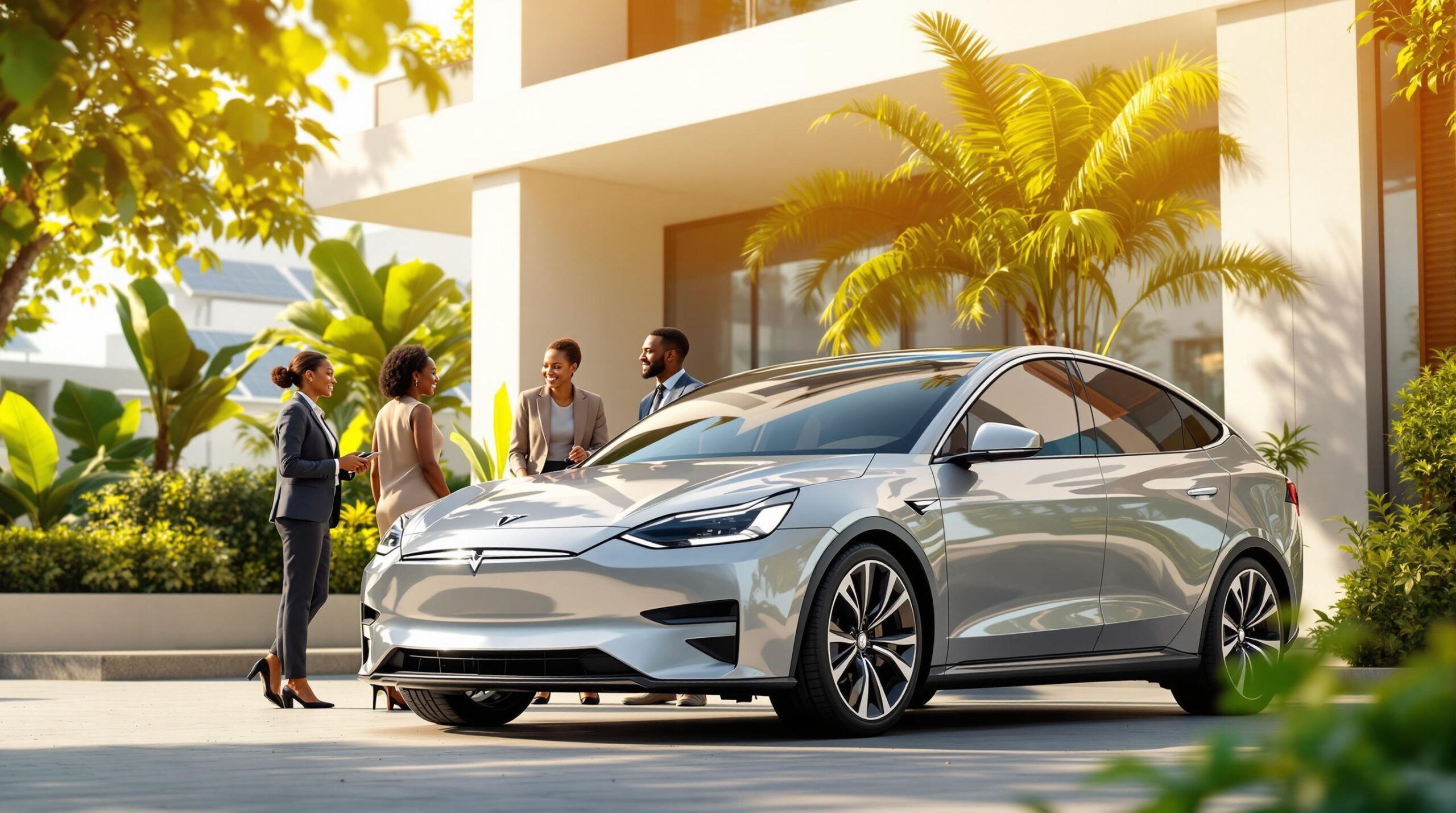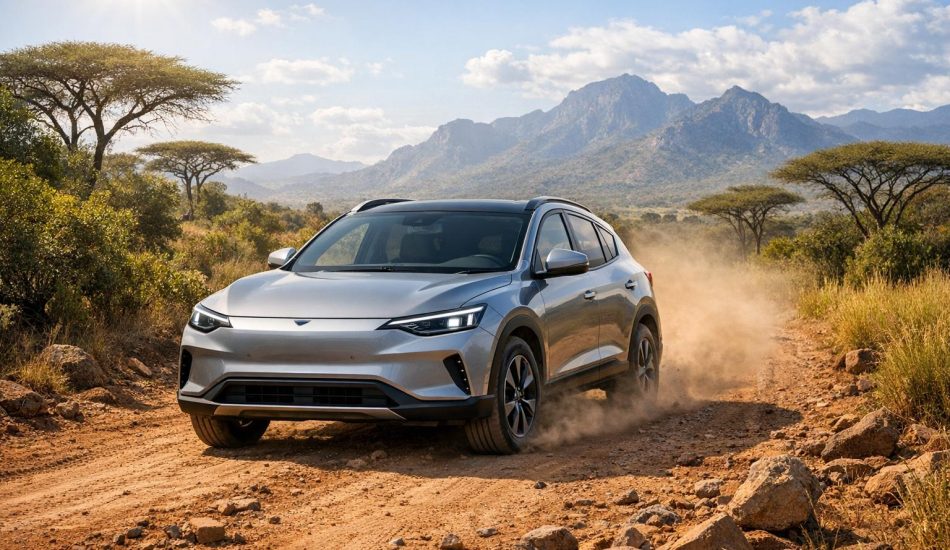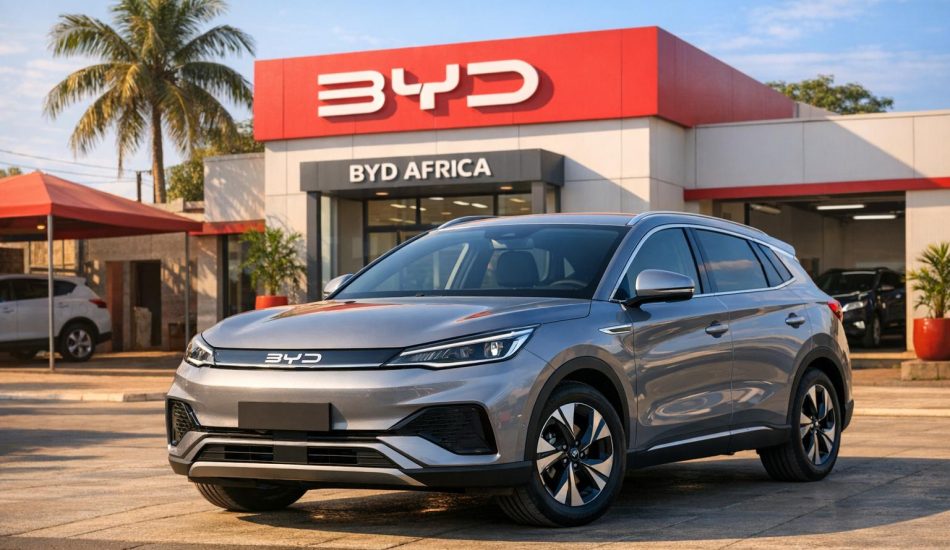
Switching to electric vehicles (EVs) can save African businesses up to 62% in lifetime costs compared to gas-powered vehicles. Here’s why:
- Lower Operating Costs: EVs consume 7.8 times less energy than gas vehicles. For example, driving 100 km in a Tesla Model 3 costs $3.37 in Kenya but $10.16 in a Mercedes C-Class. In Nigeria, it’s $1.13 versus $3.72.
- Cheaper Maintenance: EVs have 40% lower maintenance costs due to simpler design and fewer moving parts.
- Government Incentives: Many African countries offer tax breaks, VAT exemptions, and subsidies to make EV adoption easier.
- Environmental Savings: EVs emit far less CO2, with solar-charged electric buses producing 329 times fewer emissions than gas buses.
Quick Comparison
| Factor | Electric Vehicles (EVs) | Gas Vehicles (ICE) |
|---|---|---|
| Energy Consumption | 7.8x lower | Higher |
| Maintenance Costs | 40% lower | Higher (oil changes, etc.) |
| Emissions | 3.35x less CO2 (Ghana example) | Higher CO2 emissions |
| Lifetime Cost | 38–62% lower | Higher overall |
| Infrastructure | Requires charging stations | Existing fuel infrastructure |
Despite higher upfront costs, EVs deliver long-term savings and reduced emissions. African businesses can maximize benefits by adopting solar charging, leveraging government incentives, and planning infrastructure strategically.
Financing Fleets to go Electric in Africa, webinar with fleet …
1. Electric Vehicle Expenses
Electric vehicles (EVs) can save businesses a lot of money when it comes to maintenance, charging, and overall ownership. A study of 22,000 leased vehicles found that maintenance costs for EVs are about 40% lower than for traditional gas-powered cars. This is because EV motors have only one moving part, compared to the hundreds found in gasoline engines. Let’s look at some examples.
Hertz, for instance, reports that maintaining its Tesla fleet costs 50–60% less than maintaining conventional vehicles.
Charging costs depend on the region, but businesses can cut expenses significantly with smart strategies. On average, gas-powered vehicles consume about 7.8 times more energy than EVs. In some African countries, fuel subsidies can temporarily affect cost comparisons, but solar charging offers a way to slash both costs and emissions. Research shows that internal combustion engine (ICE) buses in Africa emit 3.46 times more carbon dioxide than grid-charged electric buses – and a staggering 329 times more than those charged using solar power. These advantages make EV ownership more affordable in the long run.
Government policies also make EVs more appealing financially. For example, one study suggests offering financing with interest rates below 10% and removing the 20% import duty on battery electric vehicles (BEVs) to make their costs comparable to ICE vehicles.
Although EVs require specialized technicians for their advanced electronic systems, their simpler design means fewer maintenance needs. Long-lasting components, such as brake pads, also help reduce overall upkeep costs.
Matt Cleevely of Cleevely Motors highlights this efficiency: "EVs are cheaper to maintain, look after, and certainly to service. They have half as many moving parts and require no regular oil changes."
sbb-itb-99e19e3
2. Gas Vehicle Expenses
Operating gas-powered vehicles comes with steep costs for African businesses. Beyond fuel, these vehicles demand regular oil changes, spark plug replacements, emissions testing, and more frequent servicing of fueling infrastructure. All of this adds up to increased labor costs and extra service visits.
Studies show that maintaining gas vehicles costs about twice as much as maintaining EVs. For businesses managing large fleets, this means more downtime, a bigger inventory of spare parts, and higher expenses for skilled repairs. Over time, these factors make gas vehicles a less cost-effective option. This clear difference in costs highlights why EVs are becoming a financially smarter choice for African fleets. It also sets the stage for a closer look at the broader pros and cons.
Key Benefits and Limitations
Electric vehicles (EVs) offer a mix of advantages and challenges for African businesses, especially when it comes to financial viability. One major benefit is their lower lifetime costs. For instance, electric bus fleets in Africa have been found to cost at least 38% less over their lifespan compared to traditional internal combustion engine (ICE) fleets.
Solar charging further reduces costs, cutting electric bus lifetime expenses by 19–47%. Given Africa’s abundant sunlight, this is a practical solution. Additionally, EVs emit far less CO2 than ICE vehicles, whether charged via the grid or solar power.
Here’s a side-by-side comparison of key factors:
| Factor | Electric Vehicles | Gas Vehicles |
|---|---|---|
| Initial Investment | Higher (≈$26,000 for charging setup) | Lower upfront costs |
| Operating Costs | 7.8x lower energy consumption | Higher fuel and maintenance costs |
| Maintenance | Simpler, fewer parts to service | Requires regular oil changes and repairs |
| Infrastructure Needs | Charging stations (≈$826 per home charger) | Existing fuel infrastructure |
| Lifetime Cost Savings | 38% lower than ICE fleets | Higher lifetime costs |
While EVs have higher upfront costs and infrastructure requirements, their long-term savings and efficiency make them a smart investment. However, challenges like inconsistent electricity supply, limited access to charging stations, and transmission losses still hinder adoption in Africa. Businesses can tackle these issues by:
- Incorporating solar charging
- Strategically planning charging infrastructure
- Taking advantage of government incentives
- Considering regional electricity reliability
For example, Ghana’s energy surplus could support charging for 1.5 million EVs, showcasing the potential for growth in EV adoption, especially for businesses managing fleets.
Although the ≈$26,000 cost to install charging systems in Ghana may seem steep, the long-term savings and efficiency gains make EVs a worthwhile choice. As Matt Cleevely of Cleevely Motors puts it:
"EVs are cheaper to maintain, look after, and certainly to service. They have half as many moving parts and require no regular oil changes."
Conclusion
Electric vehicles (EVs) can deliver lifetime savings of up to 62% when charged from the grid. Adding solar energy into the mix can further cut costs by 19–47%. A case study from Ghana highlights that traditional vehicles come with at least 30% higher ownership costs under the current energy mix. This is particularly relevant in countries like Ghana and Morocco, where transportation contributes over 40% of energy-related emissions.
To maximize these cost benefits, businesses should focus on three main strategies:
- Secure affordable financing and duty exemptions: Achieving interest rates below 10% and waiving import duties can help EVs reach cost parity in the first year.
- Adopt solar charging solutions: Tapping into Africa’s abundant renewable energy resources can significantly lower operational costs.
- Support fuel subsidy reforms: In countries like Algeria, Egypt, Angola, and Libya – where fuel subsidies range from 50–78% – reform is key to leveling the playing field for EV adoption.
Switching to EVs not only reduces costs but also positions businesses for long-term success. With thoughtful planning, companies can overcome initial hurdles and secure a strong, forward-looking investment in Africa’s transportation future.




